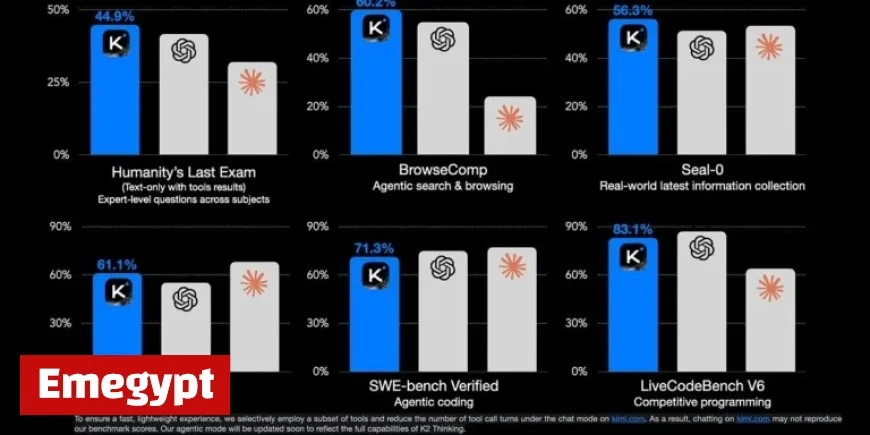Insights on Kimi K2 Thinking by Nathan Lambert

Moonshot AI, recognized as one of China’s leading AI innovators, has recently launched Kimi K2 Thinking. This model is notable for its advanced reasoning capabilities and benchmark performance.
Key Features of Kimi K2 Thinking
Kimi K2 Thinking boasts several impressive features. It utilizes a reasoning model of mixture of experts (MoE) with the following specifications:
- Total parameters: 1 trillion
- Active parameters: 32 billion
- Context length: 256,000 tokens
This model shows significant advancements in open AI performance, closely rivaling top closed models.
Performance and Benchmarks
Evaluation scores for K2 Thinking indicate it outperforms several leading closed models on various benchmarks, such as:
- Humanity’s Last Exam
- BrowseComp
Despite its achievements, K2 faces competition from established models like GPT-5 and Claude Sonnet 4. Future releases, including Gemini 3, are expected to maintain high industry expectations.
Learning and Adaptation
Kimi K2 Thinking incorporates advanced training techniques. It employs Quantization-Aware Training (QAT) to enhance the model’s efficiency for real-world applications. Through this method, it achieves:
- INT4 weight-only quantization
- Approximate 2x speed improvement in generation
The Rise of Open AI Models
The landscape of AI is rapidly evolving. Traditional closed labs, including OpenAI and Anthropic, face mounting pressure from Chinese labs which release models more swiftly. Kimi K2 Thinking is a prime example of this shift.
Challenges for Closed Labs
Open models like Kimi are gaining recognition for their effective performance. As these models become mainstream:
- Pricing pressures will increase on closed labs.
- Expectations for improved services will grow.
The AI industry is entering a new phase, where a clearer differentiation between services will become vital.
Future Implications
As Kimi K2 Thinking and similar models develop, potential changes in policy, evaluation processes, and transparency will be crucial. Understanding the pace of AI progress will be more complex, especially as public scrutiny increases.
With these advancements, 2026 is poised to deliver exciting developments in the AI sector. The expectation is that models such as Kimi K2 Thinking will enhance user experiences and push the boundaries of AI technology forward.
As the market matures, the demand for open tool-use models will only grow, setting the stage for a competitive and innovative landscape in AI.





























